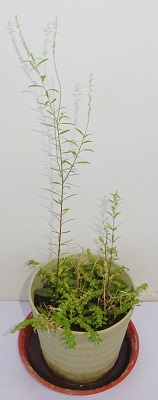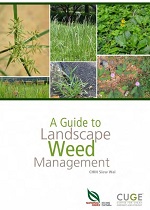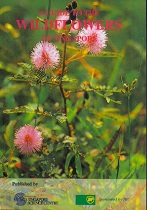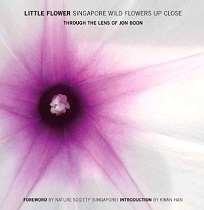| Home | Nature Weekly Index |
3 April 2016 | Weedy Plants and Grouping |
 My friend (HQ) wrote to me earlier this week urging me to set up a section on weeds in my website. I was very much into weedy
plants recently since I had lesser free time now, even over the weekend, to go out to the wild places. I had to make do
with the plants in my surrounding areas, including those in my pots, which I found them quite fascinating as well. These
are either cultivated or weedy unwanted plants. Weeds in general refer to undesired plants that grow wild among desired
plants. The term “weeds” is usually use by folks in the horticultural or agricultural trades. In the traditional or
alternative medicine field, weeds are important ingredients in their therapeutic concoctions. By the way, weed also refer
to an illicit drug called marijuana, derived from Cannabis plant.
My friend (HQ) wrote to me earlier this week urging me to set up a section on weeds in my website. I was very much into weedy
plants recently since I had lesser free time now, even over the weekend, to go out to the wild places. I had to make do
with the plants in my surrounding areas, including those in my pots, which I found them quite fascinating as well. These
are either cultivated or weedy unwanted plants. Weeds in general refer to undesired plants that grow wild among desired
plants. The term “weeds” is usually use by folks in the horticultural or agricultural trades. In the traditional or
alternative medicine field, weeds are important ingredients in their therapeutic concoctions. By the way, weed also refer
to an illicit drug called marijuana, derived from Cannabis plant.
Before my immersion into plants few years back, I used to think that weeds are small low-lying plants. It turned out that the qualified members are a far larger group that may even include trees. There is no standard definition for weeds. I will not attempt to add one since there are already many interesting definitions out there. Below are a few examples from some established or authoritative sources (assessed today):
- Australian Government: A weed is any plant that requires some form of action to reduce its effect on the economy, the environment, human health and amenity. Weeds are also known as invasive plants.
- Penn State College of Agricultural Sciences: Weeds are plants whose undesirable qualities outweigh their good points, according to man.
- Wikipedia: A weed is a plant considered undesirable in a particular situation, "a plant in the wrong place".
An often quoted statement based on a publication in 1977 [1] states that about 3% or 8000 of the approximately 250,000 species of plants worldwide behave as weeds. The price tag of controlling these weeds in the United States is in the billions, probably a similar situation in other countries with a large agricultural sector. The weeds business is clearly a lucrative one. Fighting with nature is expected to require a lot of energy. The weeds survival strategy is relatively simple ---- sheer numbers and persistent regeneration over time. It is long drawn battle and many had recognised a head-on fight using herbicides is not the way to go in the long run.


 As Singapore is not an agricultural country, weeds control is not a serious topic as in some countries. Only as recent as last
year that we had the first guide on weeds (A Guide to Landscape Weed Management). published by the National
Parks Board focusing on the landscaping sector. The other 2 guide books that came close to showcasing this group
of plants are “A Guide to the Wildflowers of Singapore” published
in 1985 and “Little Flower” published in 2012. Both did not define
these plants as weeds since the authors were sharing the information from different perspectives.
As Singapore is not an agricultural country, weeds control is not a serious topic as in some countries. Only as recent as last
year that we had the first guide on weeds (A Guide to Landscape Weed Management). published by the National
Parks Board focusing on the landscaping sector. The other 2 guide books that came close to showcasing this group
of plants are “A Guide to the Wildflowers of Singapore” published
in 1985 and “Little Flower” published in 2012. Both did not define
these plants as weeds since the authors were sharing the information from different perspectives.
Finally, I did do up a separate section on weeds. Obviously, I view weedy plants based on my own perspective.
References:
[1] Holm IG, Okycjbett PI, Pancho JN, erverger JP. The world worst weed distribution Biology. The University Press of Hawaii, Honolulu. 1977.